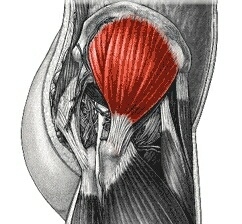Running is a dynamic high impact action that requires a strong body for maximum efficiency. Long distance running is also repetitive in nature, so to help minimise the risk of injury & provide support for tough training, strength exercises are essential. While you’re running you’re only ever on 1 leg (when you’re not in the air) so it’s important you are strong & stable on that 1 leg. Remaining balanced and stable, with only 1 contact point becomes more important the longer or faster you want to run. Core strength & pelvic stability are vital for efficient running.
 Core strength is crucial for runners and involves the area bordered by the abdominals at the front, your lower back, your pelvis & pelvic floor at the bottom and your diaphragm at the top. Integrated use of core strength & functional movements will help improve running efficiency & movement.
Core strength is crucial for runners and involves the area bordered by the abdominals at the front, your lower back, your pelvis & pelvic floor at the bottom and your diaphragm at the top. Integrated use of core strength & functional movements will help improve running efficiency & movement.
Pelvic stability refers to your hips & pelvis. Good pelvic stability will minimize the side-to-side rock of the pelvis while running. Standing on 1 leg you should be able to keep your pelvis horizontal and not allow the hip to drop.
The strength training myths;
- Doing weights or resistance training will make me bulk up or become slow.
The small weekly volume of resistance training, large volume of running and relative genetics of most runners will make it almost impossible for runners to ‘bulk up’. Instead the resistance training will increase muscular strength, power, joint stability and agility.
- You should complete light weights & high repetitions.
The best strength improvements are developed from recruiting the maximum number of motor units & muscle fibres, which requires significantly heavy weights, approximately your 8-10RM. That is the most weight you can lift for 10 repetitions with correct form. 2-3 sets of 8-10RM exercises will develop muscular strength quickly & efficiently.
- Pilates or Yoga are suitable resistance training sessions
Yoga & Pilates are good cross-training activities which incorporate core strength, active stretching, and postural exercises, but will not greatly increase the strength & power required for runners
- Only functional movements are useful to runners
Many coaches & trainers become overly fixated on functional exercises with high degree of difficulty or unstable surfaces. These exercises do have a place in a well-designed strength program but it is not essential.
When to do your strength exercises
It is important to be warm & supple when starting your exercises so complete them in the at the end of your run, the middle of your run or after a comprehensive warm up  if you are the strength exercises as a stand alone training session.
if you are the strength exercises as a stand alone training session.
I often do my strength training the day after a long run when I have an easy recovery run or a rest day planned. Other strength sessions will usually follow a medium intensity run or cross training.
How often
You should be doing your strength exercises at least twice per week, but ideally 3 times/week. It won’t take too long to do the 3-4 exercises, especially if it is after a run when you’re already warm.
Will you be sore?
You may be sore from the strength training, especially the weighted exercises, and for those new to strength training, so it is important to schedule the exercises correctly in your training week. Don’t do them the day before a key workout, but don’t be afraid of them either. Being strong will further your running. As you continue to develop your strength you won’t be as sore as when you first started.
Read the blog on the best Cross-training for runners.
For more information or coaching tips contact us at run@outfithealth.com.au



Speak Your Mind